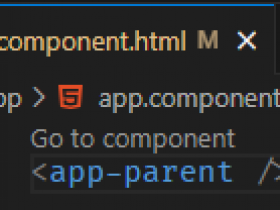- A+
所属分类:Web前端
这里给大家分享我最近学习到的8个有用的js小技巧,废话不多说,我们上代码

1. 确保数组值
使用 grid ,需要重新创建原始数据,并且每行的列长度可能不匹配, 为了确保不匹配行之间的长度相等,可以使用Array.fill方法
let array = Array(5).fill(''); console.log(array); // outputs (5) ["", "", "", "", ""]
2. 获取数组唯一值
ES6 提供了从数组中提取惟一值的两种非常简洁的方法。不幸的是,它们不能很好地处理非基本类型的数组。在本文中,主要关注基本数据类型。
const cars = [ 'Mazda', 'Ford', 'Renault', 'Opel', 'Mazda' ] const uniqueWithArrayFrom = Array.from(new Set(cars)); console.log(uniqueWithArrayFrom); // outputs ["Mazda", "Ford", "Renault", "Opel"] const uniqueWithSpreadOperator = [...new Set(cars)]; console.log(uniqueWithSpreadOperator);// outputs ["Mazda", "Ford", "Renault", "Opel"]
3.使用展开运算符合并对象和对象数组
对象合并是很常见的事情,我们可以使用新的ES6特性来更好,更简洁的处理合并的过程。
// merging objects const product = { name: 'Milk', packaging: 'Plastic', price: '5$' } const manufacturer = { name: 'Company Name', address: 'The Company Address' } const productManufacturer = { ...product, ...manufacturer }; console.log(productManufacturer); // outputs { name: "Company Name", packaging: "Plastic", price: "5$", address: "The Company Address" } // merging an array of objects into one const cities = [ { name: 'Paris', visited: 'no' }, { name: 'Lyon', visited: 'no' }, { name: 'Marseille', visited: 'yes' }, { name: 'Rome', visited: 'yes' }, { name: 'Milan', visited: 'no' }, { name: 'Palermo', visited: 'yes' }, { name: 'Genoa', visited: 'yes' }, { name: 'Berlin', visited: 'no' }, { name: 'Hamburg', visited: 'yes' }, { name: 'New York', visited: 'yes' } ]; const result = cities.reduce((accumulator, item) => { return { ...accumulator, [item.name]: item.visited } }, {}); console.log(result); /* outputs Berlin: "no" Genoa: "yes" Hamburg: "yes" Lyon: "no" Marseille: "yes" Milan: "no" New York: "yes" Palermo: "yes" Paris: "no" Rome: "yes" */
4. 数组 map 的方法 (不使用Array.Map)
另一种数组 map 的实现的方式,不用 Array.map。
Array.from 还可以接受第二个参数,作用类似于数组的map方法,用来对每个元素进行处理,将处理后的值放入返回的数组。如下:
const cities = [ { name: 'Paris', visited: 'no' }, { name: 'Lyon', visited: 'no' }, { name: 'Marseille', visited: 'yes' }, { name: 'Rome', visited: 'yes' }, { name: 'Milan', visited: 'no' }, { name: 'Palermo', visited: 'yes' }, { name: 'Genoa', visited: 'yes' }, { name: 'Berlin', visited: 'no' }, { name: 'Hamburg', visited: 'yes' }, { name: 'New York', visited: 'yes' } ]; const cityNames = Array.from(cities, ({ name}) => name); console.log(cityNames); // outputs ["Paris", "Lyon", "Marseille", "Rome", "Milan", "Palermo", "Genoa", "Berlin", "Hamburg", "New York"]
5. 有条件的对象属性
不再需要根据一个条件创建两个不同的对象,可以使用展开运算符号来处理。
nst getUser = (emailIncluded) => { return { name: 'John', surname: 'Doe', ...emailIncluded && { email : '[email protected]' } } } const user = getUser(true); console.log(user); // outputs { name: "John", surname: "Doe", email: "[email protected]" } const userWithoutEmail = getUser(false); console.log(userWithoutEmail); // outputs { name: "John", surname: "Doe" }
6. 解构原始数据
有时候一个对象包含很多属性,而我们只需要其中的几个,这里可以使用解构方式来提取我们需要的属性。如一个用户对象内容如下:
const rawUser = { name: 'John', surname: 'Doe', email: '[email protected]', displayName: 'SuperCoolJohn', joined: '2016-05-05', image: 'path-to-the-image', followers: 45 ... }
我们需要提取出两个部分,分别是用户及用户信息,这时可以这样做:
let user = {}, userDetails = {}; ({ name: user.name, surname: user.surname, ...userDetails } = rawUser); console.log(user); // outputs { name: "John", surname: "Doe" } console.log(userDetails); // outputs { email: "[email protected]", displayName: "SuperCoolJohn", joined: "2016-05-05", image: "path-to-the-image", followers: 45 }
7. 动态属性名
早期,如果属性名需要是动态的,我们首先必须声明一个对象,然后分配一个属性。这些日子已经过去了,有了ES6特性,我们可以做到这一点。
const dynamic = 'email'; let user = { name: 'John', [dynamic]: '[email protected]' } console.log(user); // outputs { name: "John", email: "[email protected]" }
8.字符串插值
在用例中,如果正在构建一个基于模板的helper组件,那么这一点就会非常突出,它使动态模板连接容易得多。
const user = { name: 'John', surname: 'Doe', details: { email: '[email protected]', displayName: 'SuperCoolJohn', joined: '2016-05-05', image: 'path-to-the-image', followers: 45 } } const printUserInfo = (user) => { const text = The user is ${user.name} ${user.surname}. Email: ${user.details.email}. Display Name: ${user.details.displayName}. ${user.name} has ${user.details.followers} followers. console.log(text); } printUserInfo(user); // outputs 'The user is John Doe. Email: [email protected]. Display Name: SuperCoolJohn. John has 45 followers.'
如果对您有所帮助,欢迎您点个关注,我会定时更新技术文档,大家一起讨论学习,一起进步。





